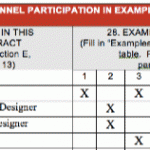There has been such an evolution is web design since I started making websites back in 1996. Back then, it was primarily done by coding and it was a hobby usually conducted by college students or programmers. But in 1997, two WYSIWYG (What You See Is What You Get) website creation programs came out that “changed the game.” Both Macromedia Dreamweaver and Golive Cyber Studio, ironically both are now owned by Adobe, allowed people to develop websites visually. And the core developer of websites shifted from the programmer to the designer. Websites started to look much better and much more “professional.” Thus, every company suddenly wanted a website as its own virtual brochure. And with this new need, web design firms sprung up like wildfire. Because each page of your site had to be designed by someone who knew what they were doing, creating a large corporate website was a big expense. It usually meant hiring not only a web design consultant, but an in-house “webmaster” to keep the site updated.
But then another evolution occurred. The blog came along and with it the popularity of the content management system (CMS). This did a couple things. First, now you didn’t have to know much “about websites” to update the content on your website. And it shifted the code which makes up the design of sites away from each page and into a file (or series of files) called a cascading style sheet. These days the entire design of your site is actually outside your site. What does that mean? It means that you can redesign your entire site by changing one file rather than each page on your site. Obviously, this method makes designing and redesigning websites much cheaper. It has also created new businesses that offered customizable website templates that are cheap and well designed.
This is not good for designers. So what do they do? They tell you a lie that has formed the foundation of many a sales endeavor, “you get what you pay for.” What they are really saying to you is “expensive equals good.”
Jeff Gardner, from Smashing Magazine, a website targeted at designers explains why this is a fallacy.
“I’m about to make a bold statement. The quality of a design and the monetary cost of producing or procuring that design have absolutely no relationship whatsoever. It’s a bitter pill to swallow, I know,” says Gadner in a recent article.
“Quality-Price-Ratio (or QPR as it’s commonly referred to) is a concept that is used extensively in the wine trade. In it’s essence it’s nothing more than a measure of perceived value, of the enjoyment you receive weighed against the price you have to pay. Do you feel that the benefit your gained was worth the price you paid? If you don’t, then the product or service has a low QPR. On the other hand, if you feel like you got away with highway robbery then the product or service has a very high QPR. I’ll spare you the metaphysical comparisons between wine and design beyond this one important point: There is no correlation between price and quality when discussing wine or design.”
Read the whole article here.





Speak Your Mind